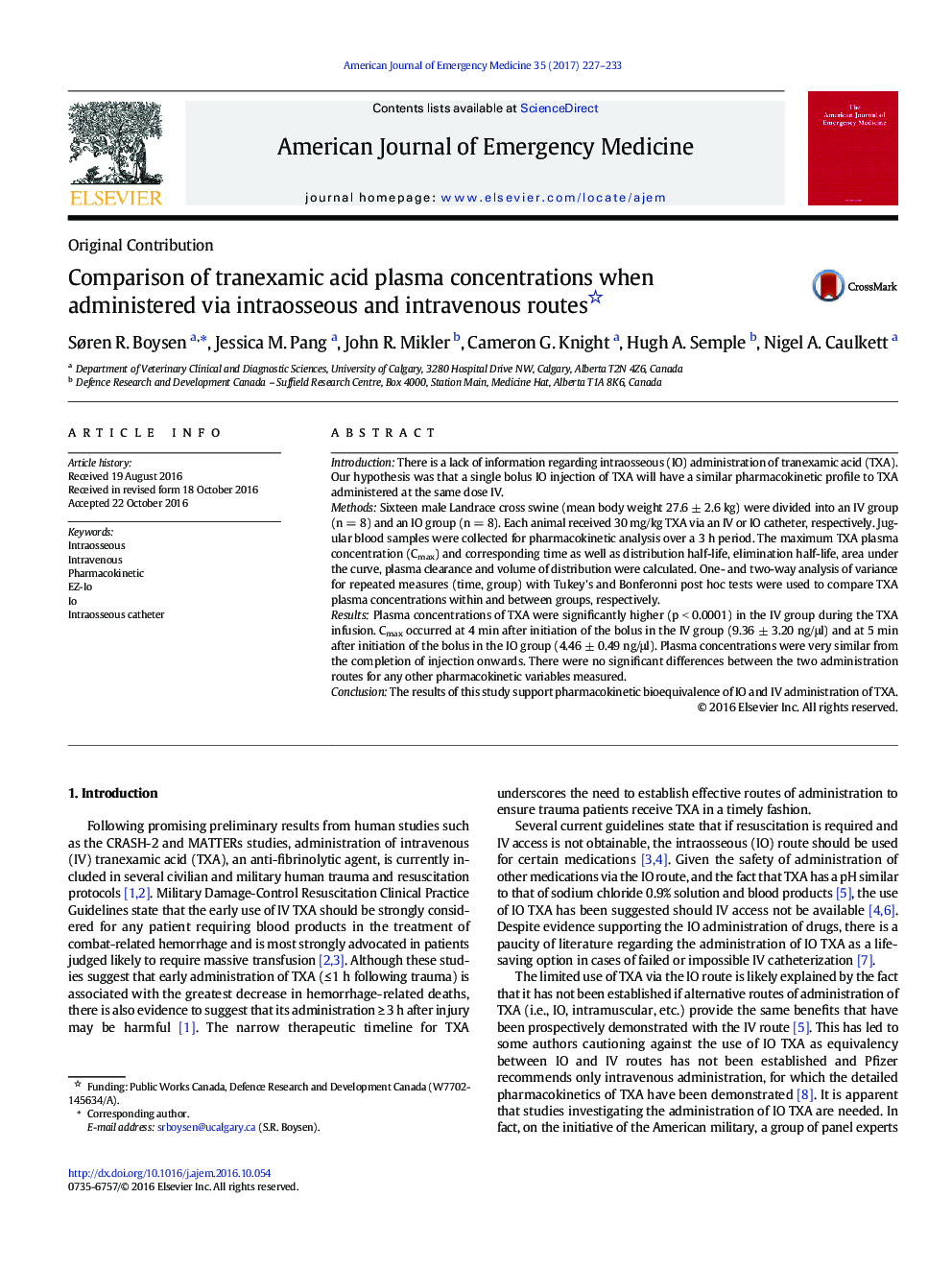| Article ID | Journal | Published Year | Pages | File Type |
|---|---|---|---|---|
| 5651015 | The American Journal of Emergency Medicine | 2017 | 7 Pages |
IntroductionThere is a lack of information regarding intraosseous (IO) administration of tranexamic acid (TXA). Our hypothesis was that a single bolus IO injection of TXA will have a similar pharmacokinetic profile to TXA administered at the same dose IV.MethodsSixteen male Landrace cross swine (mean body weight 27.6 ± 2.6 kg) were divided into an IV group (n = 8) and an IO group (n = 8). Each animal received 30 mg/kg TXA via an IV or IO catheter, respectively. Jugular blood samples were collected for pharmacokinetic analysis over a 3 h period. The maximum TXA plasma concentration (Cmax) and corresponding time as well as distribution half-life, elimination half-life, area under the curve, plasma clearance and volume of distribution were calculated. One- and two-way analysis of variance for repeated measures (time, group) with Tukey's and Bonferonni post hoc tests were used to compare TXA plasma concentrations within and between groups, respectively.ResultsPlasma concentrations of TXA were significantly higher (p < 0.0001) in the IV group during the TXA infusion. Cmax occurred at 4 min after initiation of the bolus in the IV group (9.36 ± 3.20 ng/μl) and at 5 min after initiation of the bolus in the IO group (4.46 ± 0.49 ng/μl). Plasma concentrations were very similar from the completion of injection onwards. There were no significant differences between the two administration routes for any other pharmacokinetic variables measured.ConclusionThe results of this study support pharmacokinetic bioequivalence of IO and IV administration of TXA.
